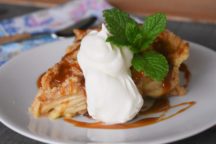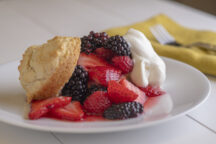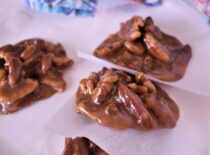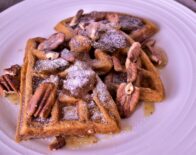
Share this on Facebook, opens in a new window
Share this on Twitter, opens in a new window
Share this on Pinterest, opens in a new window
Print this recipe
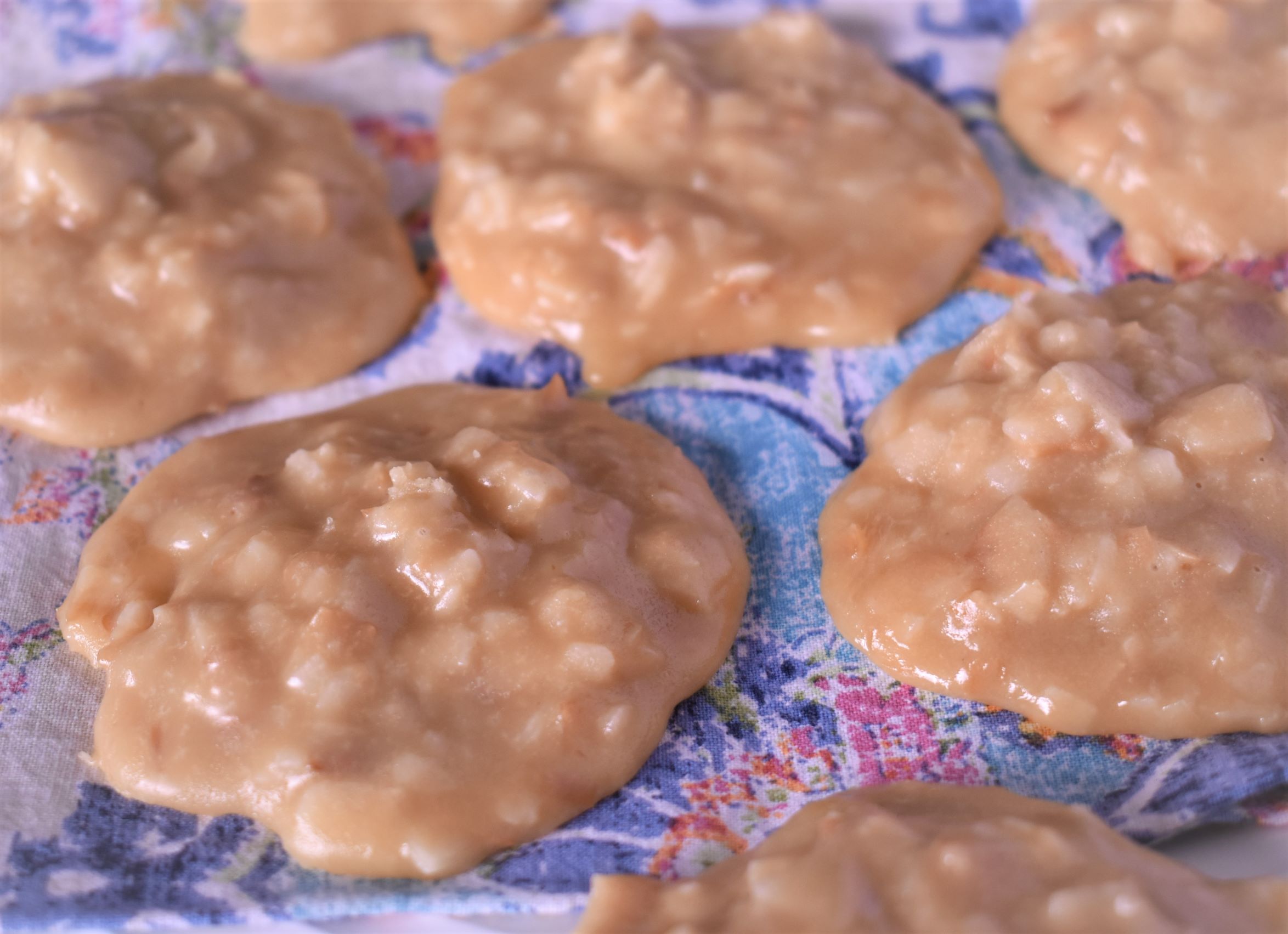
Servings
Makes about 1½ dozen
Ingredients
3 cups, in all, lightly packed grated fresh coconut (preferred), about 7 ounces (see NOTE)
3 cups sugar
1 (12-ounce) can evaporated milk
4 tablespoons unsalted butter
2 teaspoons vanilla extract
NOTE: you can used packaged coconut flakes, but remember they are sweeter than fresh coconut
3 cups sugar
1 (12-ounce) can evaporated milk
4 tablespoons unsalted butter
2 teaspoons vanilla extract
NOTE: you can used packaged coconut flakes, but remember they are sweeter than fresh coconut
How To Prepare
Assemble all the ingredients and utensils before starting to cook. You will need a candy thermometer, a large, heavy-bottomed aluminum pot or skillet with deep sides, a long-handles metal whisk or spoon, 2 large spoons (or an ice cream scoop with a manual release), and enough lightly buttered cookie sheets to hold at least 18 pralines. Spray the spoons or scoop with vegetable spray or grease them with butter.
Be careful not to get any of the cooked mixture on your skin, as it sticks and can cause serious burns.
Spread half the coconut on an ungreased cookie sheet and bake at 350° until toasted, about 10 minutes, stirring fairly often so coconut won’t burn. Remove from oven and set aside.
Combine the sugar, evaporated milk, and milk in the pot. Place over high heat and bring to a boil, whisking frequently until sugar dissolves. Then whisk only occasionally until it reaches a boil again. Now reduce heat to medium and cook until mixture reaches the soft-ball stage (240° on candy thermometer), about 24 minutes, whisking constantly. Add the coconut (both the toasted and untoasted), and the butter and vanilla, stirring vigorously for about 1 ½ minutes (see LAGNIAPPE on tests for doneness). Remove pan from heat.
Quickly and carefully drop the batter onto the cookie sheets by heaping spoonfuls, using the second spoon to scoop the batter off the first (or use ice cream scoop). Each praline patty should be 2 to 3 inches in diameter and about ½ inch thick.
Cool and store in an airtight container, or wrap each praline in plastic wrap or foil.
Copyright © 1987 by Paul Prudhomme
LAGNIAPPE
To judge doneness, use one or more of the following guides:
1. The batter will begin forming distinct threads on the sides or bottom of the pan.
2. Near the end of the cooking time, make a test praline every few seconds. The early-test praline will be somewhat runny, very shiny, and somewhat translucent. The ideal praline will have progressed past that stage – it will not be runny and will be less shiny. When cooled, it will be opaque, lusterless, and crumbly instead of chewy.
3. Near the end of the cooking time, drizzle spoonfuls of the mixture across the surface of the mixture. When ready, it will form a neat thread across the surface.
To clean the pot and utensils, boil water in the pot with the utensils in it. This will melt the batter off.
Be careful not to get any of the cooked mixture on your skin, as it sticks and can cause serious burns.
Spread half the coconut on an ungreased cookie sheet and bake at 350° until toasted, about 10 minutes, stirring fairly often so coconut won’t burn. Remove from oven and set aside.
Combine the sugar, evaporated milk, and milk in the pot. Place over high heat and bring to a boil, whisking frequently until sugar dissolves. Then whisk only occasionally until it reaches a boil again. Now reduce heat to medium and cook until mixture reaches the soft-ball stage (240° on candy thermometer), about 24 minutes, whisking constantly. Add the coconut (both the toasted and untoasted), and the butter and vanilla, stirring vigorously for about 1 ½ minutes (see LAGNIAPPE on tests for doneness). Remove pan from heat.
Quickly and carefully drop the batter onto the cookie sheets by heaping spoonfuls, using the second spoon to scoop the batter off the first (or use ice cream scoop). Each praline patty should be 2 to 3 inches in diameter and about ½ inch thick.
Cool and store in an airtight container, or wrap each praline in plastic wrap or foil.
Copyright © 1987 by Paul Prudhomme
LAGNIAPPE
To judge doneness, use one or more of the following guides:
1. The batter will begin forming distinct threads on the sides or bottom of the pan.
2. Near the end of the cooking time, make a test praline every few seconds. The early-test praline will be somewhat runny, very shiny, and somewhat translucent. The ideal praline will have progressed past that stage – it will not be runny and will be less shiny. When cooled, it will be opaque, lusterless, and crumbly instead of chewy.
3. Near the end of the cooking time, drizzle spoonfuls of the mixture across the surface of the mixture. When ready, it will form a neat thread across the surface.
To clean the pot and utensils, boil water in the pot with the utensils in it. This will melt the batter off.

